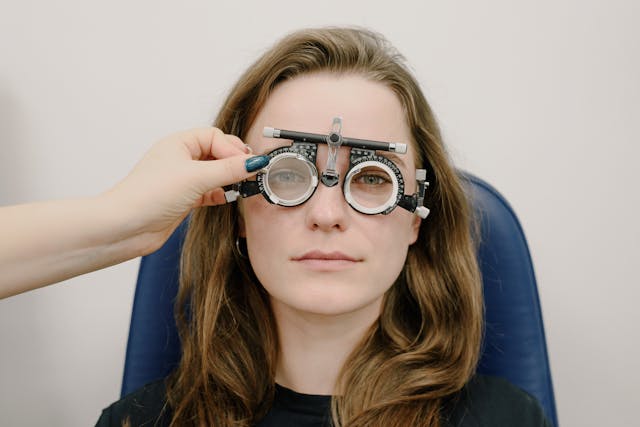
Glaucoma is a silent and often progressive eye condition that leads to vision loss if left unaddressed. While it primarily affects adults over 40, glaucoma can develop at any age. Early detection and awareness of risk factors are key in managing the condition and preserving vision. This article provides an overview of glaucoma, risk factors to watch for, and the importance of recognizing early signs.
Glaucoma
This is caused by damage to the optic nerve, which connects the eye to the brain. The condition typically results from elevated pressure inside the eye, but occasionally occurs even with normal pressure levels. This pressure buildup affects the optic nerve, leading to gradual vision loss over time.
There are several types of glaucoma, with open-angle glaucoma being the most common. Other forms include angle-closure and congenital. While these types vary in how they affect the eye, all forms require timely detection and management.
Understanding Risk Factors
Several factors may increase the likelihood of developing glaucoma. While everyone should be mindful of their eye health, individuals with specific risk factors should consider regular check-ups. Understanding these risk factors is the first step in staying vigilant about eye health and the need for regular assessments.
- Age: Adults over 40 are more likely to develop glaucoma.
- Family History: A family history of glaucoma significantly increases one’s risk.
- Ethnicity: People of African, Hispanic, or Asian descent are at a higher risk.
- Medical Conditions: High blood pressure, diabetes, or migraines may contribute to the likelihood of glaucoma.
- Eye Injuries or Conditions: Past injuries, severe nearsightedness, or thinning of the optic nerve increase susceptibility.
Symptoms to Watch For
Glaucoma is often called the “silent thief of sight” because most types develop slowly without noticeable symptoms. Some forms, such as angle-closure glaucoma, present sudden and acute signs. Monitoring your vision and seeking advice from an eye professional is key.
Here are some symptoms to be mindful of:
- Gradual loss of peripheral (side) vision
- Blurred or patchy vision
- Severe eye pain or headaches in acute cases
- Seeing halos around lights
The Importance of Early Detection
Detecting glaucoma early allows for effective management that can slow its progression. One of the best ways for early detection is through routine comprehensive eye exams, especially if you have one or more risk factors. For those at higher risk, scheduling regular eye check-ups becomes even more key. Eye care specialists can create a monitoring plan tailored to your needs and any necessary intervention is timely.
During an eye exam, professionals can assess eye pressure, inspect the optic nerve, and perform visual field tests to look for changes that might be indicated early. These exams are straightforward, painless, and invaluable in identifying issues before they lead to significant vision loss.
Also Read: Transparent Elegance: How Clear Lenses Are Redefining Fashion Eyewear?
Taking Control of Your Eye Health
Knowledge is a powerful tool when it comes to managing glaucoma. By understanding the condition, identifying risk factors, and prioritizing regular eye exams, you can safeguard your vision and overall quality of life. If you have concerns about your eye health or risk factors for glaucoma, consulting with an eye care professional is a proactive step you won’t regret.







